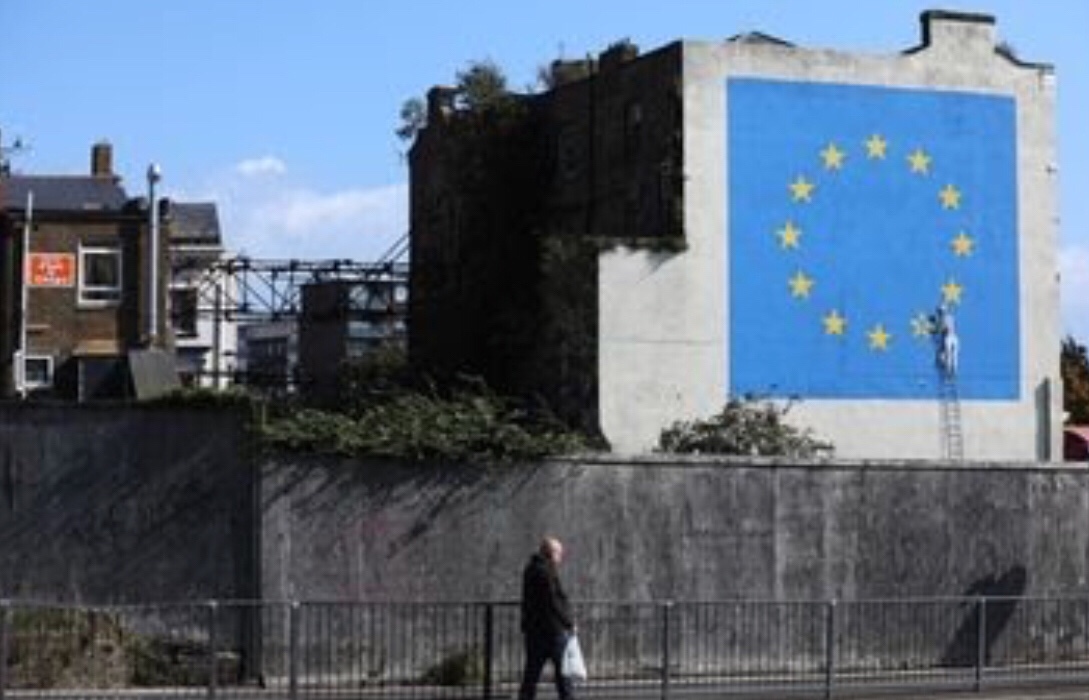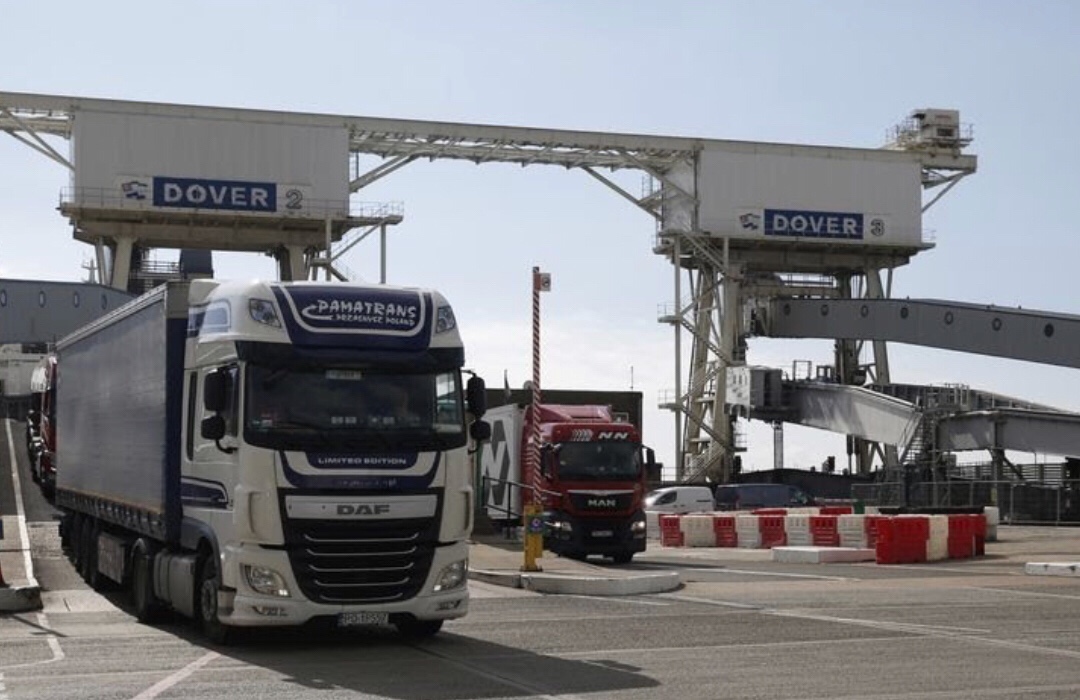2018 The year of Brexit – make or break
This is the year when the biggest political and economic conundrum to face the U.K. in modern times will be solved, further complicated or even abandoned in all but name.
 A mural by street artist Banksy depicting a EU flag being chiseled by a workman covers the side of a building in Dover.
A mural by street artist Banksy depicting a EU flag being chiseled by a workman covers the side of a building in Dover.
Within 10 months, the British government and European Union aim to have an agreement on their divorce and at least the outline of their future trading relationship. They have different ideas about what Brexit should look like and different views on how the talks themselves should be ordered.
Then there are the divisions within each camp. The U.K.’s governing Conservatives, whose decades-old rift over EU membership was the catalyst for Brexit, remain split over what it really means. The opposition Labour Party is avoiding the question, and the Scottish nationalists don’t want to leave at all.
The EU may be putting its unity before any other priority, but negotiations could reveal conflicting national interests among the remaining 27 members.

So after a year of flawed predictions, here’s a look at several scenarios that just might come to pass in 2018.
The Base Case
While the U.K. wants the full trade deal done by the time it leaves on March 29, 2019, the EU wants it ready to go by January 2021. This is what EU experts reckon could happen:
After a couple of months of uneventful talks, an agreement is reached on the transition deal that businesses have been crying out for. It’s not legally binding yet, but it’s enough to prevent a mass exodus of companies. In March, trade discussions start.
The U.K. fights for the City of London, but soon realizes that all the banks have contingency plans anyway and a fair amount of business will still be done in London after the split. The EU won’t budge on its refusal to let the U.K. keep the best bits of membership and Prime Minister Theresa May’s Conservatives won’t let her make the concessions that would be needed to remain in the EU’s single market.
In October there’s an outline agreement, which is vague, but detailed enough to be clear that Britain is headed for a trade deal that’s a lot like the one Canada struck with the EU.
 Cargo trucks disembark a cross channel ferry at the Port of Dover.
Cargo trucks disembark a cross channel ferry at the Port of Dover.
It will keep tariffs off most goods, but put up barriers at customs and won’t do much for the service industries that make up most of the U.K. economy. Carsten Nickel of Teneo puts the chances of this scenario at about 60 percent.
The Irish border is back as a major obstacle. In the end, May calls the bluff of her Northern Irish allies in the Democratic Unionist Party and they accept that in some areas they will have different rules to the rest of the U.K. to keep the border with the Republic of Ireland open.
The Upset
Talks on transition go well enough. Then, by October, it’s clear negotiations on the future trade partnership are failing. The question of how to keep the Irish border open without a customs agreement rears its head again.
This time, it proves impossible for May to satisfy her three most difficult audiences: the Irish government, which is backed by the EU; the Democratic Unionist Party, which is propping up her government; and the ardent Brexit-backers within her own party.
Despite two weeks of crisis talks with the DUP, no deal is reached. May’s minority government collapses and an election is called for Thursday Nov. 15. The Conservatives have no time to choose a new leader so against the odds May takes the party into the short campaign.
On election day, the first in the fall since 1974, voter turnout is down. Labour manages to mobilize the youth vote while elderly Conservatives stay at home on a damp autumn day. Shortly before dawn, Corbyn is declared the winner and becomes prime minister with a small majority of 20. Once in government, Labour’s policy moves toward closer ties with the EU.
By December, the time for talking is over as Brexit day looms. At an emergency negotiating session on Christmas Eve, the U.K.’s chief negotiator, Keir Starmer, accepts the EU’s offer of membership of the European Economic Area.
It means Britain will maintain full access to its biggest market for goods and services, but now has to accept rules it has no say in making. It has also failed to “take back control” of immigration, a major issue in the Brexit debate.
The Walkout
Talks on transition take longer than the U.K. hoped and the start of proper trade discussions is delayed. It soon becomes clear that the services industry is going to be largely left out of the future trade deal.
Businesses squeal and Brexit-backers at home wonder in public why May agreed to pay a hefty divorce bill in return for such a bare-bones trade deal. Loose ends that weren’t properly tied up in the first few months of talks continue to dog discussions.
The EU again reminds the U.K. that it needs to find a way to keep the Irish border open after the split, but it won’t give an inch to help find a solution.
The Wish
Talks on trade and transition start quickly in January and by February a deal on transition is agreed.
The U.K. convinces the EU that it should offer it a “Canada plus, plus, plus” deal. That means a broad trade agreement that keeps tariffs off goods and also allows services companies, including banks, to continue to operate across the continent. The EU was divided on financial services but the pragmatists in Europe win the day.
Britain also convinces the EU that it needs to get a fully detailed trade agreement drafted in time for exit day so that it can be signed immediately after Brexit. Businesses and customs officials now have a palatable two years to prepare for the shift to the new arrangement.
Source: Bloomberg
You must be logged in to post a comment.